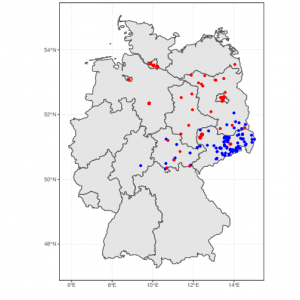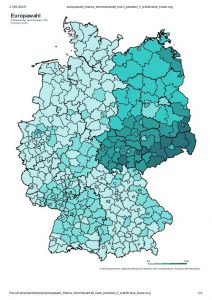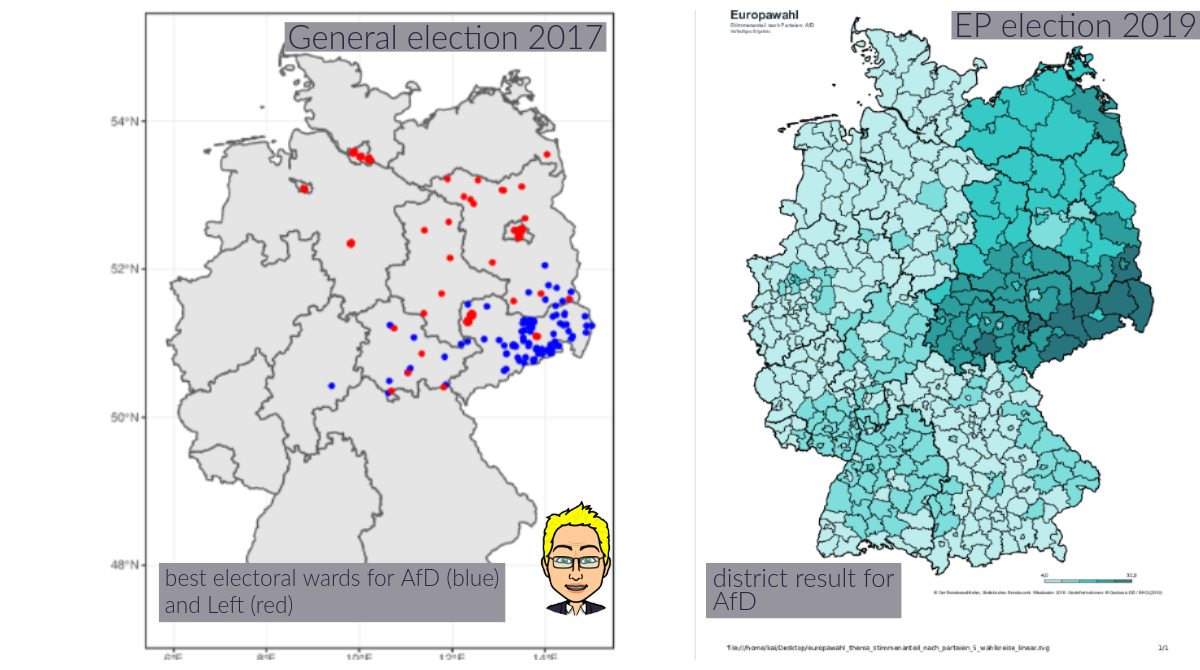The AfD was founded near Germany’s financial centre of gravity (Frankfort) by members of the old western elites. But early on, the eastern states of Brandenburg, Saxony, and Thuringia became important for the further development of the party. It was here, during the 2014 state election season, that the AfD began to toy (very reluctantly at first) with anti-Muslim sentiment. And the ensuing radicalisation of the AfD was pushed by leaders from these three states (Gauland, Höcke, and Petry).

In the process, the south-east of the former GDR has become the AfD’s heartland. When Andre Poggenburg, another hardliner, broke away over the AfD’s alleged compromises (and his personal finances and conduct), he set up a new party for “Mitteldeutschland” – the ill-defined and sometimes ill-reputed part at the south-eastern edge of the country.
In the 2017 federal election, the AfD did extraordinarily well here. Most of the wards in which the AfD is the dominant party can be found in this corner of Germany.

The results of yesterday’s European election are similarly revealing. While their national performance – almost two points below their 2017 national result – must look disappointing from their point of view, they polled up to 33 per cent in some of the south-eastern districts, making them by far the strongest party. And the next round of voting (and government formation) in Brandenburg, Saxony, and Thuringia will be interesting, to say the least. If the cordon sanitaire holds, it could result in truly awkward coalitions. And if it doesn’t, all bets are off.
But quite apart from these more practical consequences, such levels of disparity are simply something to behold.
Discover more from kai arzheimer
Subscribe to get the latest posts sent to your email.



Clumsy thumb : 2021 election. And yes, those states really stand out!
What they like to call Mitteldeutschland stands out like a sore thumb
Here’s the map @mhansenphd put together for our GP&S article on the AfD in the 2022 election
RT @kai_arzheimer: Most-read #blog posts in #2019 no 9 ?
Regional support for the “Alternative for Germany” varies wildly https://t.co/eJ…
RT @kai_arzheimer: From the vault: Regional support for the “Alternative for Germany” varies wildly https://t.co/eJfo4Lokaf
RT @kai_arzheimer: Regional support for the “Alternative for Germany” varies wildly – kai arzheimer https://t.co/eJfo4Lokaf
RT @kai_arzheimer: Regional support for the “Alternative for Germany” varies wildly – kai arzheimer https://t.co/eJfo4Lokaf
RT @kai_arzheimer: Regional support for the “Alternative for Germany” varies wildly – kai arzheimer https://t.co/eJfo4Lokaf #EP2019 #German…